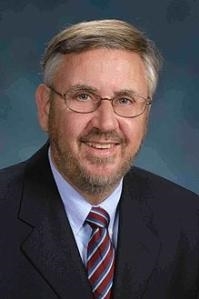讲座题目:Ecologically engineered wetland landscapes as solutions for nutrient pollution in lakes, wetlands, and coastlines
主 讲 人:William J. Mitsch 教授
主 持 人:陈雪初 副教授
开始时间:2017-8-29(周二)上午9:00-10:10
讲座地址:中山北路校区理科大楼A504
主办单位:beat365 科技处
报告人简介:

William J. Mitsch教授
Mitsch教授是具有国际影响的杰出学者。目前是美国佛罗里达海湾海岸大学大沼泽湿地研究中心主任,佛罗里达州西南部的栖息地恢复和管理项目JulietC.Sproul主席,他同时还是美国俄亥俄州立大学的名誉教授和Olentangy河湿地长期研究站创始主任。Mitsch教授的研究和教学主要集中在湿地生态系统、生物地球化学循环、湿地重建和恢复、生态工程和生态修复、以及生态模型等。他主编或参与编写了18本专著,包括5版的《Wetlands》和第二版的《Ecological Engineering》,同时以作者或共同作者的身份发表的论文、报告或出版物超过500篇。他已经指导了80多名研究生和10名博士后。他是《Ecological Engineering》杂志的创刊者和主编,曾担任美国生态工程学会(AEES)主席。Mitsch教授荣获了许多奖项,由于在世界湖泊和湿地的杰出贡献,他在2004年共同获得世界水科学最高奖—“斯德哥尔摩水奖”。
报告摘要:
The world is faced with unprecedented threats to our aquatic ecosystems from excessive nutrients caused especially by agricultural and urban runoff. More than 750 aquatic ecosystems suffer from degraded ecosystem services with impairments described as hypoxia, dead zones, and harmful algal blooms, most due to pollution caused by excessive nitrogen and phosphorus. At the same time, it has also been estimated that, on a global scale, we have lost half of our original wetlands to our current extent of 8 to 12 million km2, with most of that loss in the 20th century. I am proposing here a sizeable increase in our wetland resources around the world to solve the diminishing wetland problem but with the strategic purpose of mitigating the excess phosphorus, nitrogen, and carbon in a sustainable fashion. Case studies include minimizing phosphorus inflows to the Florida Everglades and Lake Erie in the Laurentian Great Lakes and reducing nitrogen fluxes by wetlands and riparian forests in Midwestern USA to reduce seasonal hypoxia in northern Gulf of Mexico. Finally, a new concept known as wetlacuture is described that involves creating or restoring wetlands to sequester nitrogen and phosphorus from mildly polluted rivers and lakes and then recycling the captured nitrogen and phosphorus back to agriculture to reduce the need for additional fertilization.